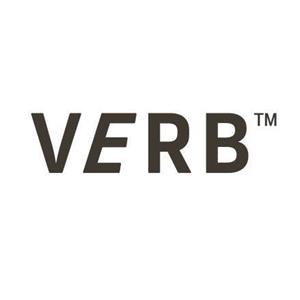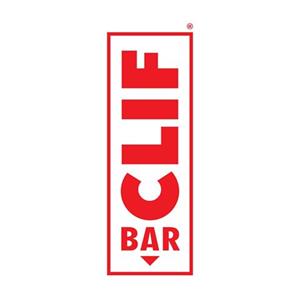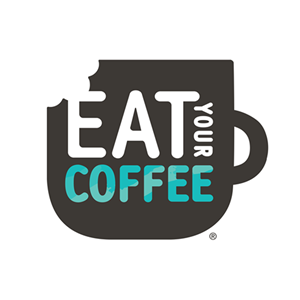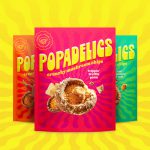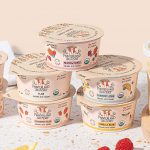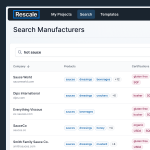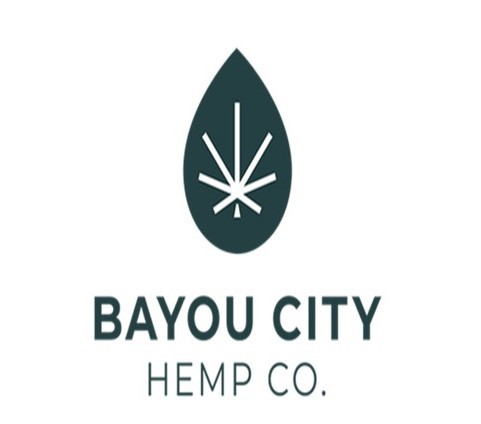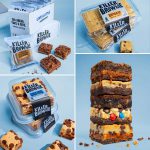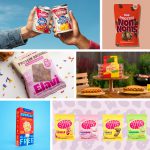Brands Energize Offerings With Caffeinated Product Launches
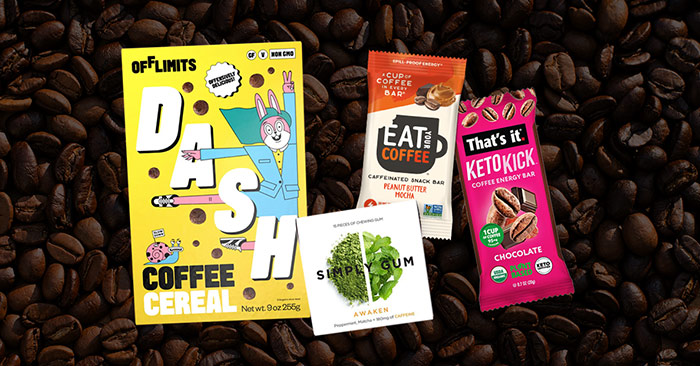
Caffeine is perhaps the original functional ingredient, with coffee and tea battling sleep-derived mornings and afternoon slumps for generations. Over recent years, demand has continued to surge, with the rise of RTD coffee and highly caffeinated energy drinks and shots making it even easier for consumers to get their caffeine fix.
Food brands are trying to get in on this energy action, taking cues from beverage companies and stepping up their use of caffeine as an ingredient. The demand appears to be there: per a Hartman Group survey last year, among many functional food “powers” like digestion, immunity and brain cognition, the highest percentage of consumers (23%) turn to functional foods for energy, with 44% saying they’re interested in trying energy-boosting foods.
To get to consumers, food brands are largely taking a two-pronged approach, seeking out both coffee drinkers who are looking to simplify their morning routines with a two-in-one food and energy combo, and also consumers looking for lower-dose, safer-feeling alternatives to aggressive beverage plays like Red Bull or 5-Hour Energy.
Still, for caffeinated food, it’s early; factor in the variety of consumer needs, and there’s no one leader when it comes to ingredients, flavors or form factors. Eat Your Coffee has built a whole brand around the concept of snack bars pumped up with organic coffee beans, while Verb Energy introduced bars made with green tea extract in 2018. Since then momentum has only continued, with larger players like Clif (Coffee Collection) and Dunkin’ Brands (Coffee Thins) entering the space. There are also snackable products from brands like Siren Snacks, Simply Gum, and That’s It, all aiming to provide consumers with a more convenient pick-me-up.
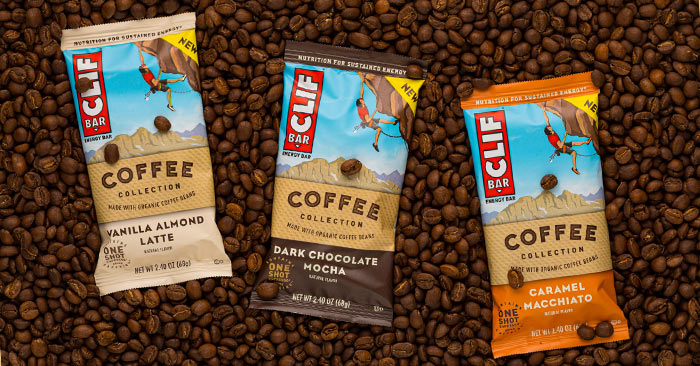
Finding Inspiration at the Coffee Shop
Given the ubiquity of coffee as a popular caffeine delivery system, it’s not surprising that a lot of emerging brands are leading with the bean as their main ingredient — even if it’s in solid form..
Launching their company from a Northeastern University dorm room in 2014, Eat Your Coffee co-founders Johnny Fayad and Ali Kothari were early believers in the potential of caffeinated food to streamline morning routines. After starting with bars, the brand subsequently expanded into snack bites and nut butters, while securing investment from Stray Dog Capital and Axle Capital in 2017. In all formats, though, they’re using coffee as the main draw.
Still, Fayad said Eat Your Coffee faced a learning curve with the unfamiliarity of the form factor; the team responded by adjusting the packaging to call out caffeine content and reformulating the bars to improve flavor, helping consumers to understand what kind of punch the bars pack.
Education barriers have also gotten lower thanks to new competition in the caffeinated food space, according to Fayad, specifically from leading bar maker Clif.
“[Clif] has allowed a mass consumer to engage with our brand that better meets their needs thanks to how we’ve modified our offering over time,” he said.
After internal research showed its bars are often purchased alongside coffee, Clif debuted its Coffee Collection at retailers nationwide in 2019 in three coffee shop-inspired flavors: Dark Chocolate Mocha, Caramel Macchiato and Vanilla Almond Latte, and has since grown the line to include mini versions in Espresso and Cappuccino varieties.
Other brands launched caffeinated coffee-forward products because of outright consumer demand. Elizabeth Giannuzzi, co-founder and CEO of San Francisco-based functional snack brand Siren Snacks, said the brand was inspired to launch its Energy Bites line, offered in Mocha Chip, Matcha Latte and Chai Latte flavors, after surveying shoppers for the top functionalities that interested them.
“By focusing on beverage-inspired [flavors], the addition of caffeine in this line seems very intuitive to customers,” Giannuzzi said.
Flavor Focus
Caffeine aside, coffee’s also just a popular flavor, although it can lead to some energizing side effects. The caffeine content of OffLimits Cereal’s coffee variety (15 mg per serving) was in fact an almost incidental result of its desire to avoid artificial flavoring. Using coffee roasted by Intelligentsia, the cereal packs a smaller dose of caffeine that’s still “enough to add a little pep but humble enough to accommodate the caffeine-sensitive,” according to founder Emily Elyse Miller.
“Most coffee-flavored foods are just that, flavor; not real coffee,” Miller said. “Consumers who appreciate black coffee and dark chocolate really understand how much work went into making a food product that maintains the integrity of a fresh cup of coffee.”
But coffee is polarizing: Verb Energy founders Matt Czarnecki, Bennet Byerly and André Monteiro wanted a better alternative to their energy beverages, feeling “jittery and unsatisfied” after drinking coffee for a late night energy boost in college, so they created Caffeinated Energy Bites, which debuted in 2018. Rather than using coffee as a caffeine source, they turned to 65 mg of green tea extract, which contains the amino acid L-Theanine to provide consumers with what they say is a steadier energy. While Verb has a chai SKU, it also has more traditional flavors like Blueberry, Lemon Raspberry and Salted Peanut Butter.
“People want an energy source that makes them feel more human, and that’s something we’re crafting with our brand,” he said.
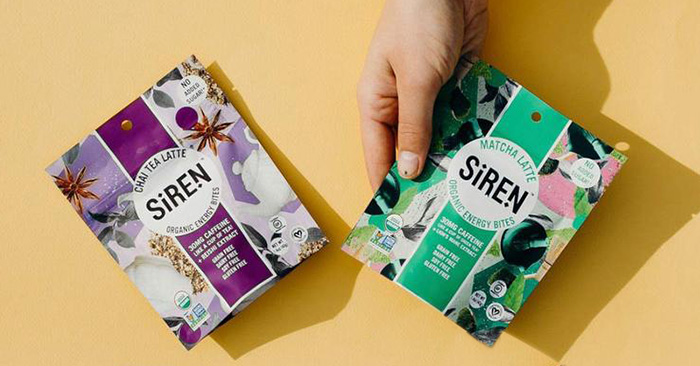
How Much Is the Right Amount of Caffeine?
While caffeine is in high demand, many consumers don’t want too much of it. Simply Gum founder and CEO Caron Proschan had lower doses of natural caffeine in mind when she launched her brand’s caffeinated sub-line, Awaken, last year. As a brand that wants to be sold in both natural and conventional channels, Proschan added, she also wanted to create products with naturally sourced caffeine from matcha.
Though the plastic-free gum and mints maker had dipped its toes in functional products with turmeric and lemongrass products, Awaken is perhaps the brand’s clearest attempt to offer noticeable functional benefits. The gum and mints, offered in a Peppermint and Matcha flavor, can be found at CVS, Cost Plus and Raleys, as well as on Amazon.
Simply’s gum has 180 mg of caffeine — about two cups of coffee — per pack, while its mints contain 360 mg, or the equivalent of four cups of coffee in each package. With each piece of gum or mint providing a small portion of caffeine, consumers can pick how much of an energy boost they’d like to get, Proschan noted.
Fayad said he hopes that the growing interest in caffeinated foods will ultimately lead to clearer labeling of caffeine dosages across food and beverage. While the FDA and America Beverage Association guidelines require disclosure of caffeine as an ingredient, they do not require labeling of specific caffeine dosages.
For now, brands use different strategies to convey the energy boost they might give. Giannuzzi said Siren found that consumers weren’t familiar with specific milligram counts of caffeine, so they are trying to use equivalencies consumers can understand.
On its packaging, Siren Snack’s Mocha Chip flavor is marketed as “like half a cup of coffee,” while its Matcha and Chai Latte flavors are touted as being “like a cup of green tea.” Eat Your Coffee’s packaging claims that its products offer “a cup of coffee in every bar,” with 80 mg of caffeine, while That’s It uses similar messaging for its bar with 95 mg of caffeine. Meanwhile, both Verb’s and Clif’s products, featuring 65 mg of caffeine, note they contain the equivalent of one shot of espresso.
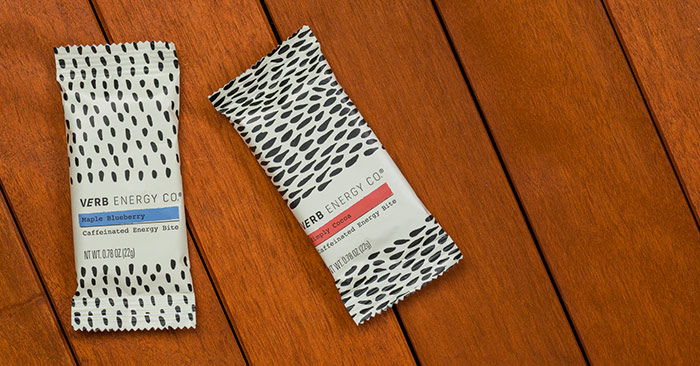
Instant Gratification
As functional foods rise in popularity, brands have promised consumers everything from boosted immunity to mental acuity from a few bites of a granola bar. But a recent survey by the Hartman Group found that while consumers more often look to supplements for preventative benefits, they want their functional foods to be “strongly linked to direct physical effects.”
It’s for this reason that many brands have turned to energy boosting benefits, with the belief that a positive experience with a product will result in longer term brand loyalty. Alternatively, it can be hard for consumers to determine the efficacy of many functional products, especially in a short amount of time.
“When you have a protein bar, you don’t really feel that you’re having 20 grams of protein,” says That’s It. CEO Dr. Lior Lewensztain, MD. “But [caffeine] is a place where we can really bring that to the consumer.”
But Is it Replacing Coffee?
So how do you replace a product that commands such consumer loyalty? While some avid coffee drinkers may think it blasphemous to consume coffee in any form but liquid, brands say they have slowly been able to create some converts. Fayad said that though Eat Your Coffee saw resistance in its early days, consumers have since come around to the concept — in some settings.
“For a while, the loudest customers would constantly tell us how they’d never replace their coffee by eating it, but a few years back through some surveys we ran, we found that our most valuable customers were using our products as a coffee/breakfast snack replacement,” Fayad said. “They’d have one to two bars in the morning to kick start their day and another in the afternoon to keep it going, so we’ve selectively leaned into the idea of Eat Your Coffee as a replacement for some.”
Some brands have also noted use occasions beyond coffee replacements. Siren and Clif, for example, both said they’ve found that consumers are also using their products as pre-workout fuel. These products have also appealed to those averse to coffee or tea’s bitter taste or caffeine dosage, allowing some caffeinated food brands to expand their flavors beyond those of typical coffee beverages, like Eat Your Coffee’s Peanut Butter Mocha, Fayad noted.
Since its launch in 2018, Verb has raised over $13 million, and sales have continued to rise, up 300% last year — impressive given that retail sales in the bar category fell flat last year. The popularity of the bar product gave the company confidence to launch an Energizing Drink Mix this year, part of its goal to establish a “holistic energy” platform, according to Verb co-founder and CEO Matt Czarnecki.
“Really from Day One, we’ve strived to become a holistic energy brand and to help our customers live vibrant and energized lives,” Czarnecki said. “When we look at the competitive set, we’re looking at brands like Red Bull and 5-hour [Energy].”
No matter the direct competitors, most brands are hoping to improve upon some of the flaws of typical caffeinated beverages — like the crash that typically follows a spurt of energy, or the splash from the drink inevitably left on the roof of the car when you drive away.
“Juggling your life, your kids, your work, you have that cup of coffee in your hand and [it’s] just one more thing to think about,” Hart said. “If you can find those things, energy from food and caffeine, in one place, it just makes people’s lives better.”
